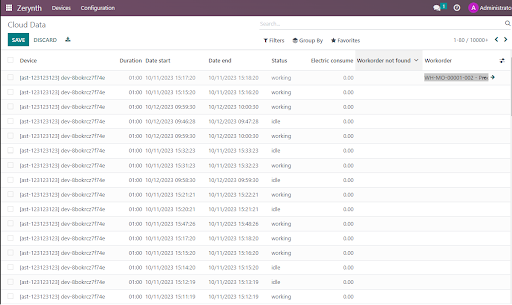Odoo
The Zerynth Industrial IoT Platform extracts data from any industrial machine in less than 3 hours and seamlessly integrates with Odoo. To connect the two systems, you only need to enter the credentials of the target Odoo instance in the Odoo settings.
Each Zerynth device is registered within the Odoo app and connected to an Odoo work center with the goal of automating the Odoo’s production module.
The Zerynth Platform is full compatible with all Odoo versions, Zeryynth App is compatible with Odoo 14 and Odoo 16 with the Production module installed. It can be used in both in the community version and the enterprise version! The Odoo 17 version is also in progress.
Contact us If you need more support and Subscribe to communications to be updated on next news and releases.
Connector Zerynth for Odoo Partner
For all Odoo partners, it’s possible to leverage the data from the Zerynth Devices to unlock new functions and automations with all enabled Odoo modules. The Zerynth connector makes the complete payload from the IoT devices installed in the field available within the App. Any type of data can be used to create new configurations with Odoo modules such as Production, Maintenance, Warehouse, Barcode or Accounting.
Key Features
Machinery data extracted are connected to Odoo’s work center
Zerynth extract valuable data from industrial machines such as machinery status, alarms, net working time, time cycle, energy consumption, pieces produced and discarded to automatically feed-in the Odoo’s production module.
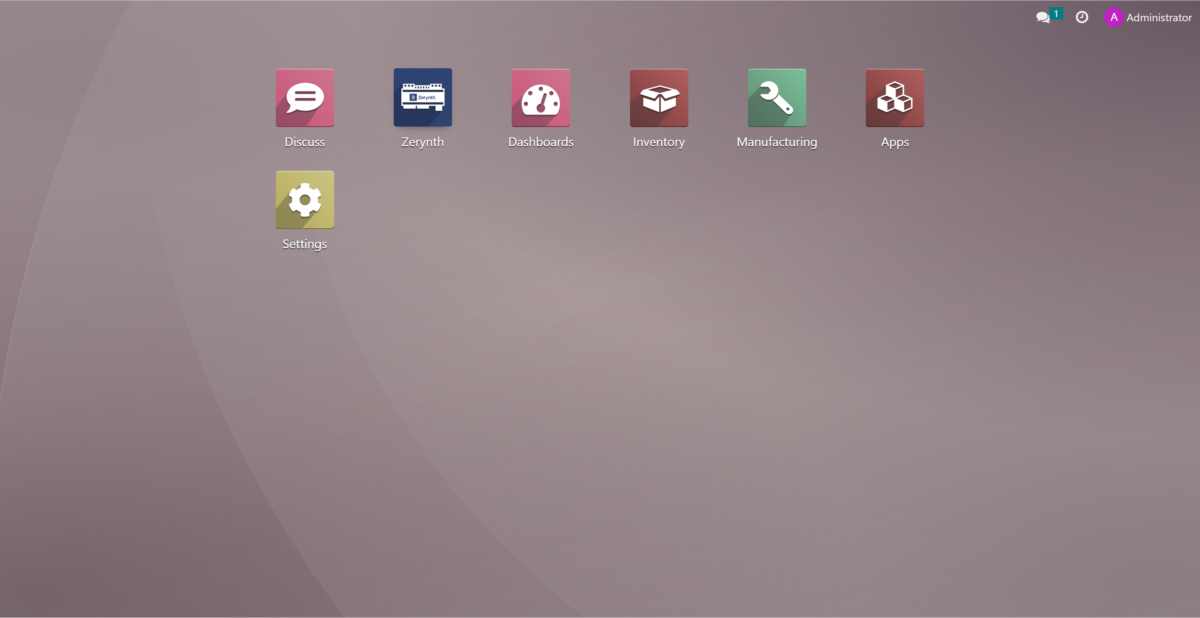
Easy data extraction from any industrial machines and quick connection with all Odoo versions
Zerynth for Odoo enables easy data extraction from any industrial machines (legacy and modern). Zerynth Platform is compatible with Odoo 14 and Odoo 16 with the Production module installed in both in the community version and the enterprise version.
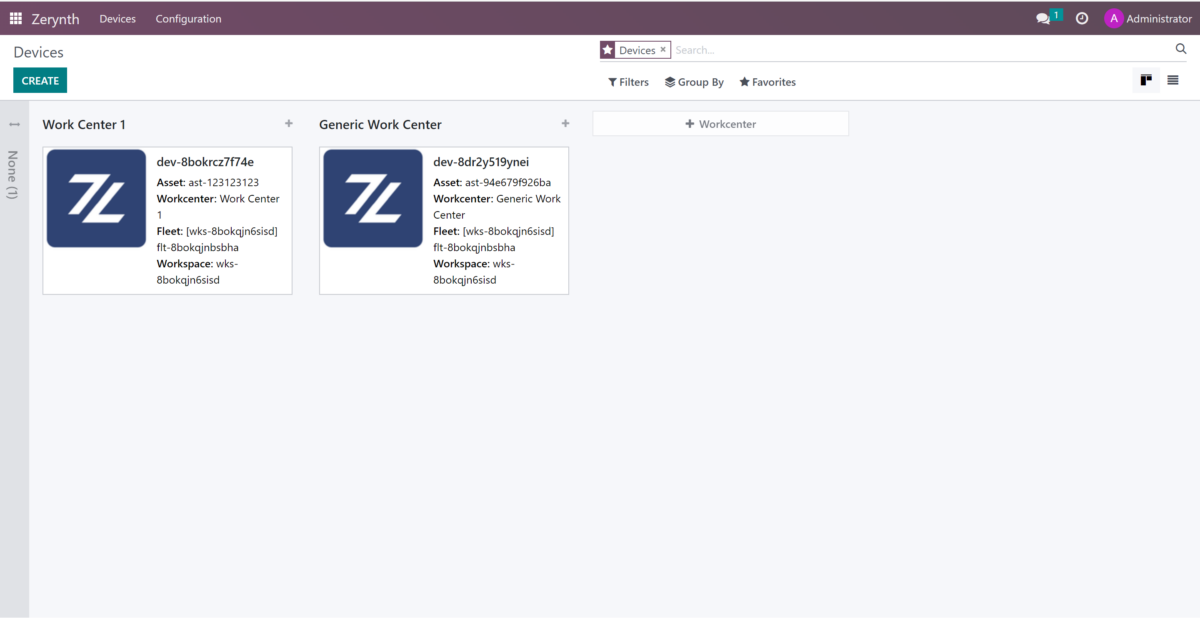
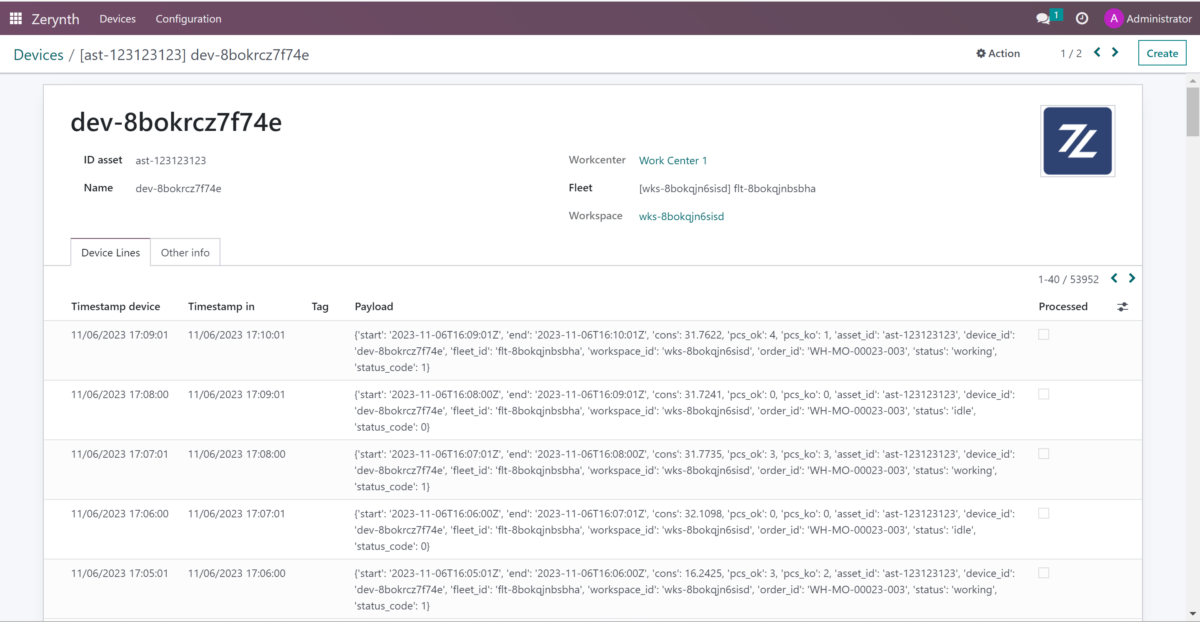
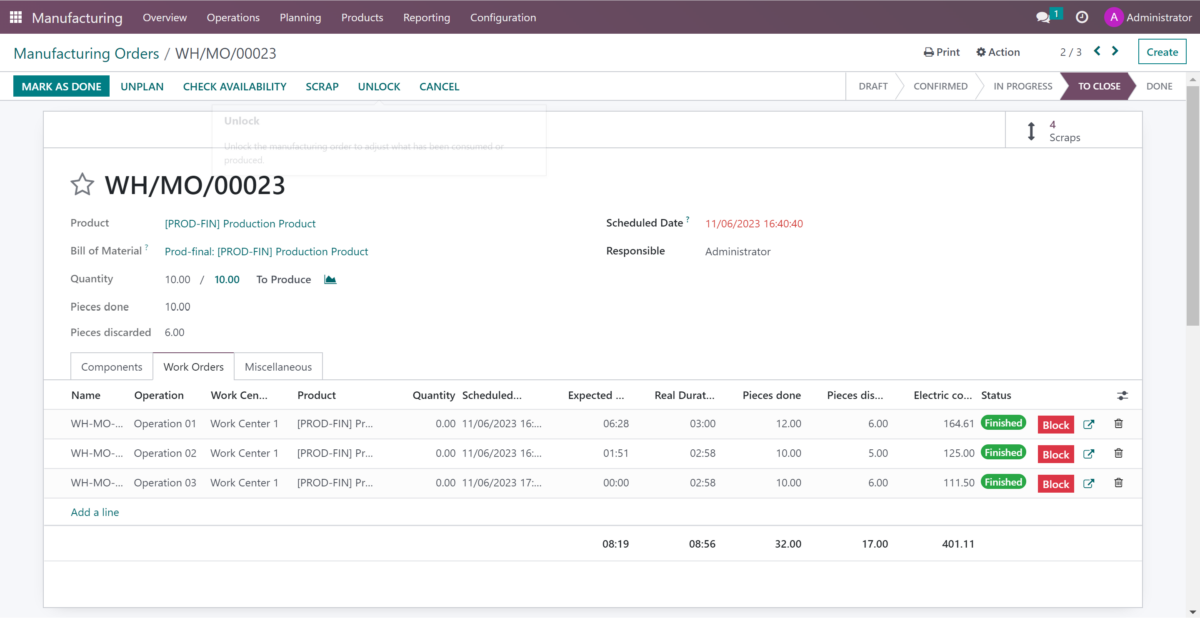
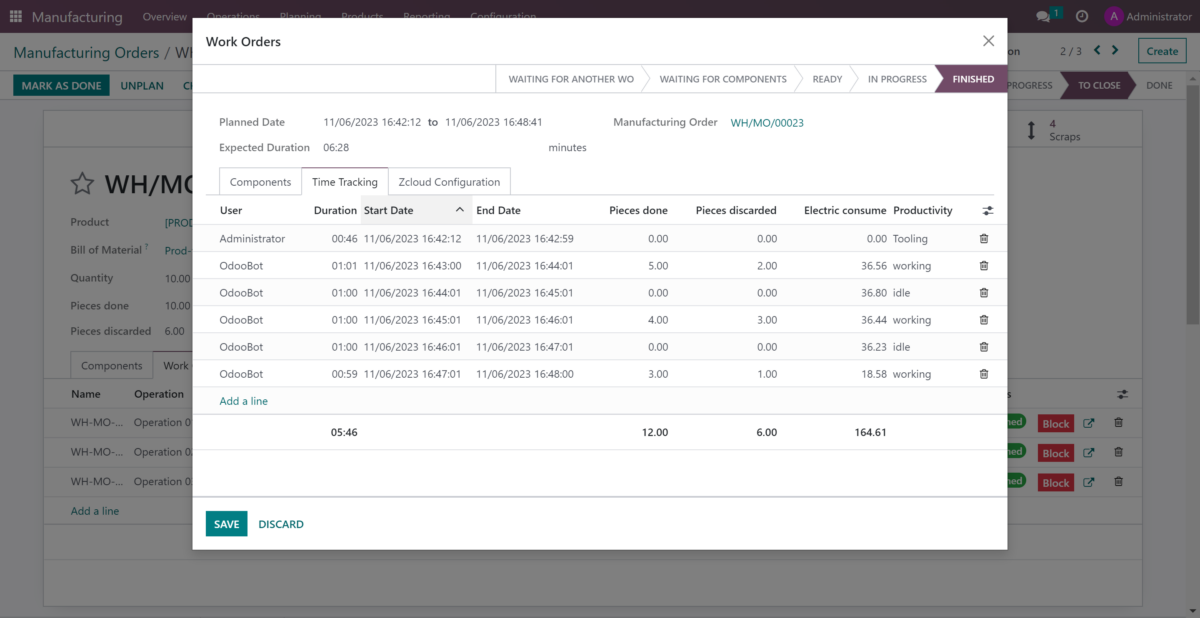
Plug-and-play, not invasive, easy to implement solution.
Industrial machines can be easily connected using Zerynth IoT Platform and Zerynth Edge IoT Kits. With remote access to assets and a no-code configuration, you can manage assets from any location. It also supports any connectivity option available on site, (Wi-Fi, Ethernet and mobile) on both modern and legacy systems.
The Configuration
Let's explore together how to configure the Odoo production module with the Zerynth platform.
Minimum requirements: Ensure that port 443 is open on the server running the Odoo instance and that the Odoo instance is in HTTPS.
Follow these 4 steps to connect the two platforms:
Install the Zerynth App in Odoo and grant necessary permissions to users.
- Access the Odoo App Store: Odoo App Store and Install the package and activate the Zerynth App within the Apps.
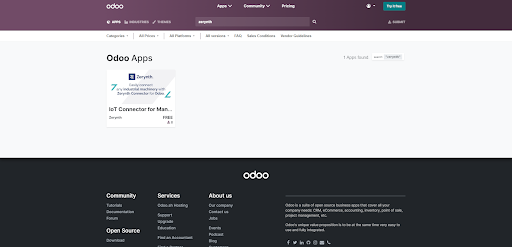
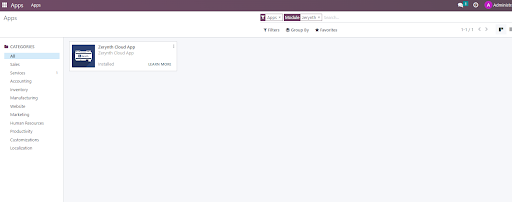
- Activate permissions for "Zerynth Cloud App" for the desired users.
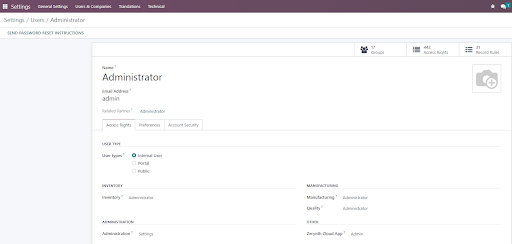
- From Manufacturing/Settings in Odoo, activate the use of Work Orders.
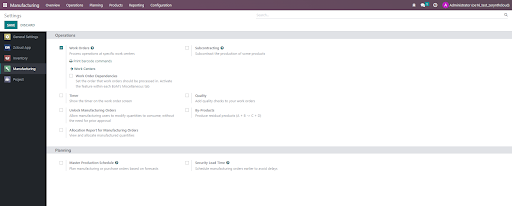
Access to the Zerynth Platform
To enable data exchange between Zerynth Edge Devices (and consequently, the Zerynth cloud platform) and the Manufacturing module of Odoo, access the Zerynth Platform portal at https://cloud.zerynth.com/.
To enable Zerynth Integration for Odoo:
- For Odoo Partners: Odoo Partners can request a free demo account here.
- Client Account: Following the activation of a Zerynth subscription by the Odoo Partner or the End Customer, a Zerynth account will be created for the End Customer and made available to the Partner.
Integration with Odoo
- From the side menu under Tools, select Data Management / Integrations / Odoo.
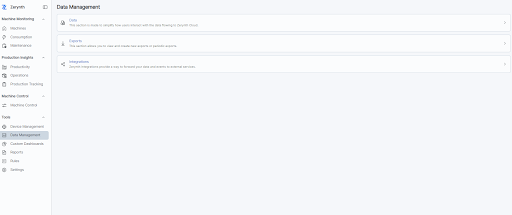
- Settings:
- Choose DATA from the dropdown menu.
- Assign a name to the INTEGRATION.
- Enter the URL of the target Odoo database and append "/jsonrpc" at the end (e.g., for the URL https://odoo.test.com, enter https://odoo.test.com/jsonrpc).
- Enter the name of the target Odoo database.
- Input the access credentials for the Odoo environment: UID and Password.
- Click the CREATE button to complete the procedure.
Optional Secondary Settings:
- Send Raw Data: Use only if you want to receive "raw" data collected by devices (Note: high packet sending frequency).
- Filters: Use only in situations where you want to include only a specific group of devices (fleet).
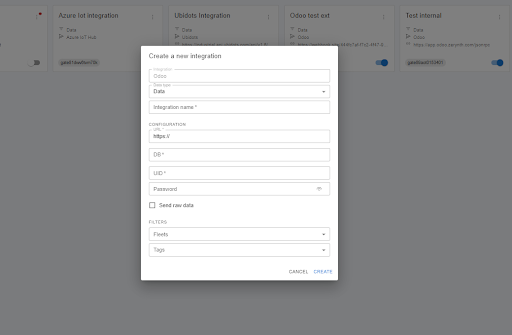
-
Enabling Zerynth API for Odoo:
- From the Tools menu, navigate to Settings / General.
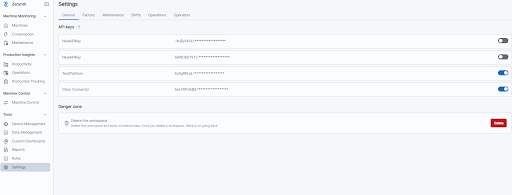
- Click the "+" button next to API Keys. Assign a name to the API KEY, click Create, and copy the newly generated API Key.
- From the Tools menu, navigate to Settings / General.
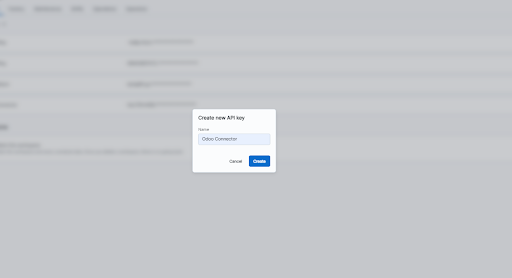
- Open the Zerynth App, go to Configuration / Settings.
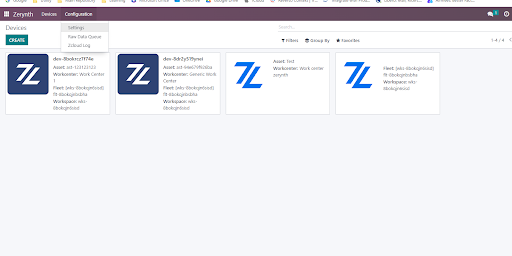
- Enter the URL https://api.cloud.zerynth.com/v3 of the Zerynth Platform and the previously created API Key.Default value “Odoo”
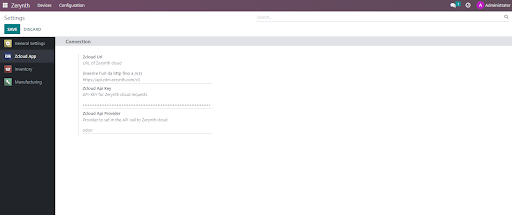
If the previous steps are successful, the creation of devices will happen automatically upon receiving the first data on Odoo. All the Edge Devices present in the Zerynth account will automatically appear in Odoo as Virtual Devices.
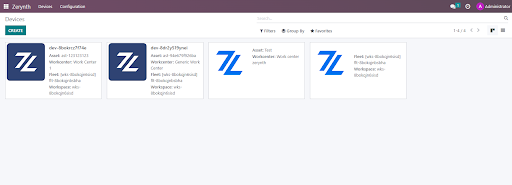
How the integration works
Once the two accounts are connected, data exchange occurs automatically between the two platforms. Within the "Zerynth" app on Odoo, in the Devices section, Zerynth devices activated on the machinery will appear. Each device must be assigned to the corresponding Work Center present in Odoo.
Work Orders Identification
The detection of the machinery status (e.g., Idle or Working) identifies a working cycle.
The duration of the machinery in a specific status for a defined period determines the length of the cycle.The parameters collected (e.g., consumption) within that specific interval are assigned to the same working cycle.
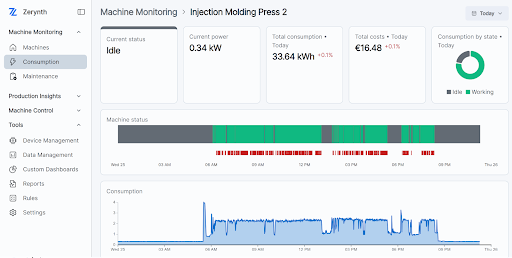
How the connector works
With the automatic update of each Work Order, the aggregated data within the production order is also updated:
- Actual duration of the work order (Sum of times in working)
- Total electrical consumption (KWh)
- Produced pieces and rejected pieces
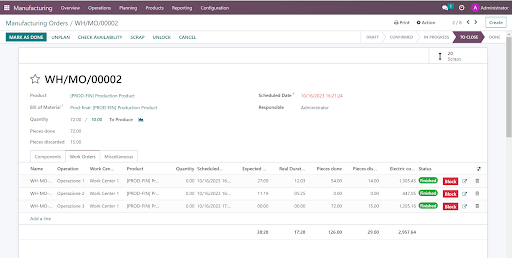
Other Features
Work Center Setup
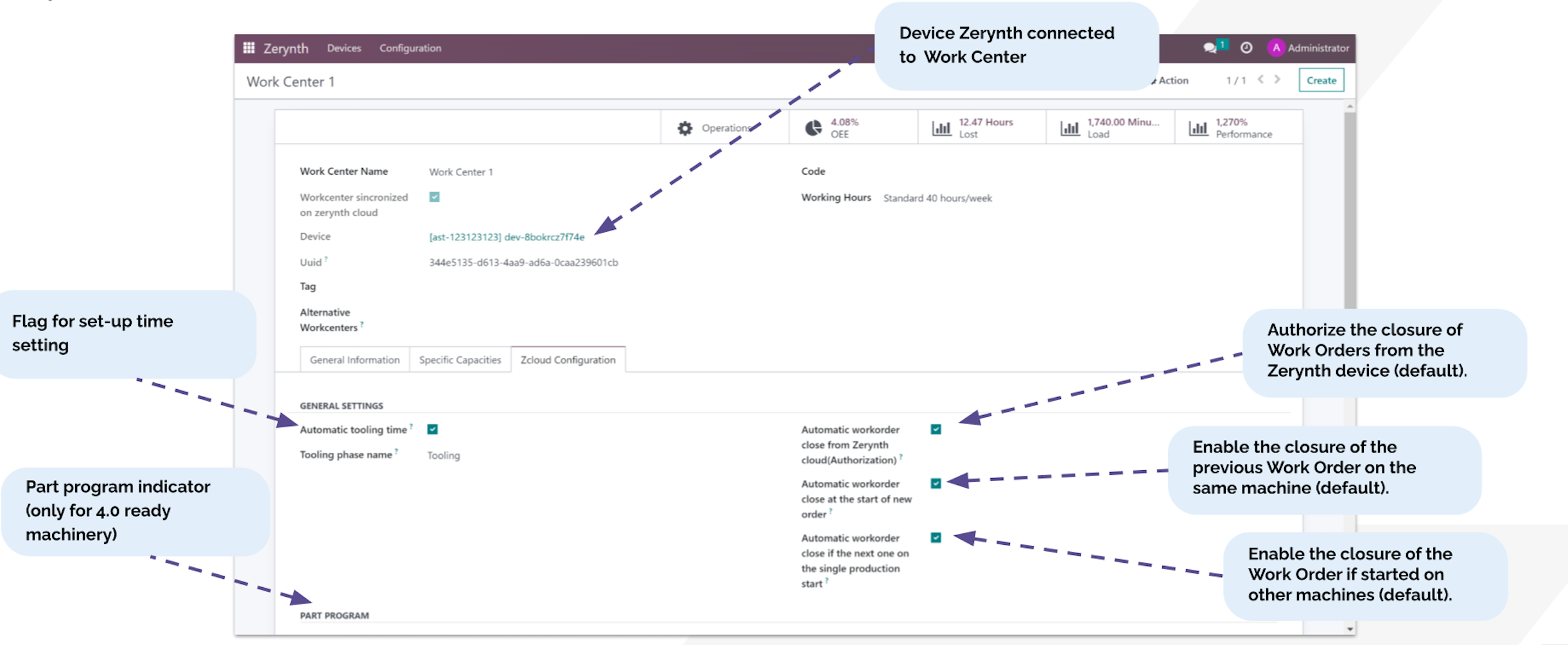
The automatic closure function of Work Orders can be enabled through the 3 flags present in the "ZCloud Config" tab of each individual Work Center.
- Automatic closure from Zerynth is activated only if it is provided in the firmware of the installed device.
- Automatic closure from the same machine or other machines is managed by Odoo, with the aim of maintaining only one active Work Order for each work center.
Tooling
Zerynth devices can send different statuses within Work Orders, other than Idle and Working.
One automatic status that can be detected is the machinery setup (tooling). This status is identified as the initial cycle between the start of the Work Order and the actual initiation of the machinery (status=working).Additional phases depend on the configuration of the device.
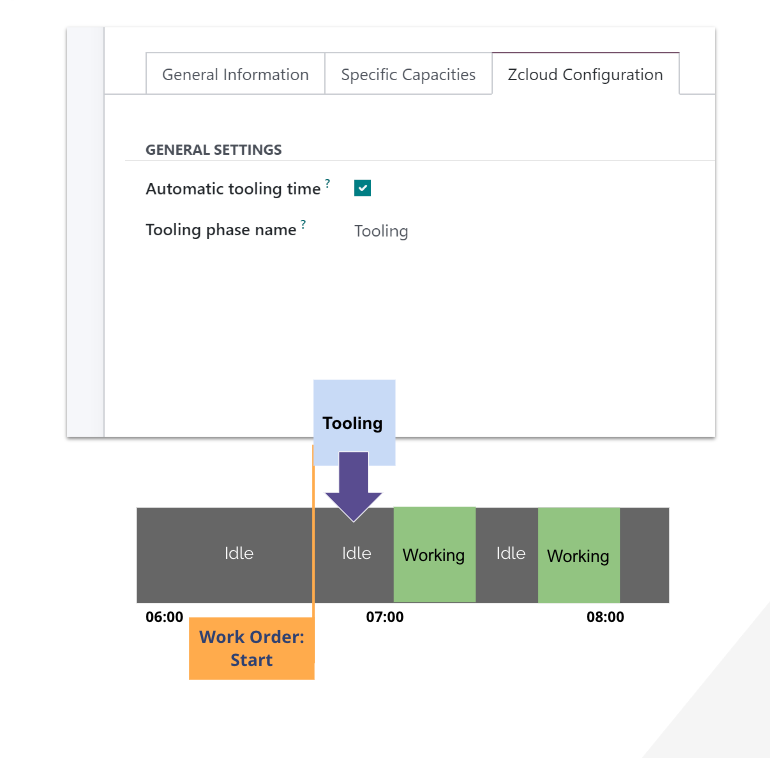
Control Machinery for Industry 4.0
Modern "4.0 Ready" machinery allows for remote loading of instructions (Part Program) onto the PLC necessary for the start of processing.
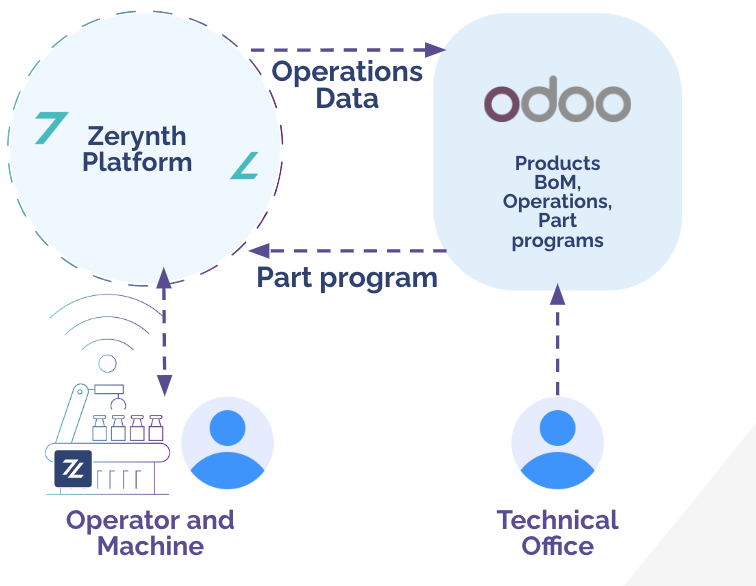
Typically, these are files generated by CAD/CAM software for defining the path to be executed in the processing. In other cases, they consist of a series of variable settings for the machinery (recipes) saved with a unique code for each operation or product.
Machine control is enabled through bidirectional communication between the machinery and the Zerynth Edge Device.
Machine control can be activated if the following requirements are met:
- The machinery is enabled by the supplier for reading and writing of at least one variable (part program) within the PLC or CNC for initiating the processing.
- The "Machine Control" app is active for each "4.0 Ready" machine on the Zerynth account.
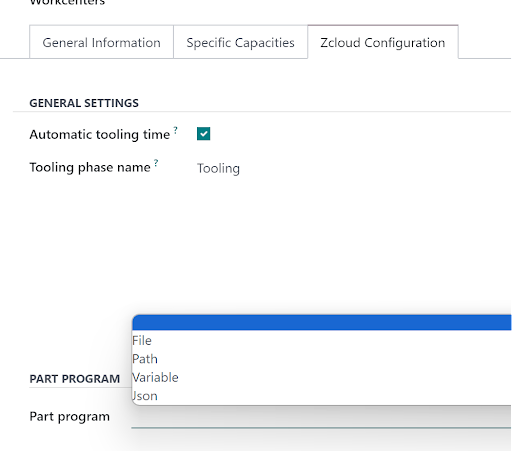
Depending on the type of machinery, four standard loading modes for the part program into the Workcenter in Odoo are defined:
- File: Requires the upload of a file within the Bill of Materials of each relevant product. Typically involves files indicating the path to be executed by the machinery.
- Path: If the file is located within a shared network folder, it is possible to directly write the path to uniquely identify it.
- Variable: If the machinery is configured with a set number of predefined codes or programs, it is possible to set the list of "recipes" for each machine. This allows the operator to select the correct one within the Bill of Materials for each product.
- Json: It is possible to insert a .json file to configure setups for machinery not covered by the first three standards. The .json file can encompass flexible encoding based on the requirements of the machinery.
Custom Production
Within the product configuration, there is a "Generic Product" flag, particularly suitable for managing production on specification.
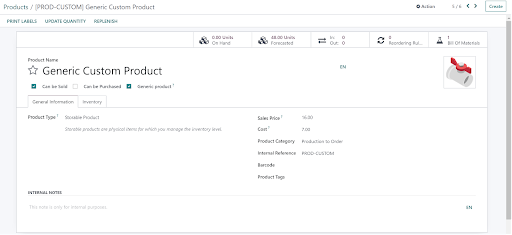
In this case, it is possible to manage a single generic product for each product family, assigning a different part program each time directly in individual work orders.
With the flag active, when a work order is initiated on a 4.0 machine, Odoo searches for the part program to start within the work order instead of within the product's Bill of Materials.
Recovery of Unassigned Cycles
It is possible to retrieve work cycles that have not been assigned to any work order. This might occur if the operator starts the machinery without initiating the corresponding work order first, or starts it late when the machine is already active.
In this scenario, the device continues to record work cycles and sends them to the Zerynth/Devices/Cloud Data screen, where they can be reassigned.
By taking this action, Odoo inserts the cycle into the relevant work order, even after its closure.
